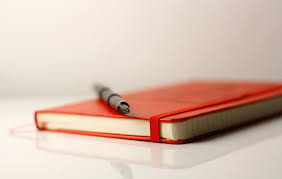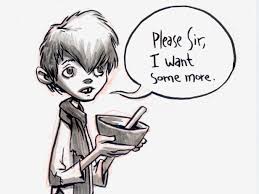Write a diary entry after the episode you had when you asked for more food. Describe your feelings, the atmosphere in the workhouse and explain how hunger and starvation play a very important role in your everyday life. Write about your expectations and plans for the future.
"Two roads diverged in a wood, and I - I took the one less traveled by, AND that has made all the difference" The Road Not Taken by Robert Frost
DREAMING IN ENGLISH. Are you dreaming in English yet?
WELCOME!!! This is a bit of a challenge for me!!! This blog is intended for all audiences. I hope you enjoy and get the most of it!!!
Here you might find resources to help you navigate the muddy waters of English. The humble aim of this blog is just to keep you in touch with different types of English and different aspects of the English culture , to increase your curiosity about English through many different fields.
Here you might find resources to help you navigate the muddy waters of English. The humble aim of this blog is just to keep you in touch with different types of English and different aspects of the English culture , to increase your curiosity about English through many different fields.
Are you dreaming in English yet? por BE se encuentra bajo una Licencia Creative Commons Atribución-NoComercial-SinDerivadas 3.0 Unported.
miércoles, 8 de noviembre de 2017
BEING OLIVER: Diary Entry
Imagine you are Oliver Twist and you keep a secret diary while you are in the workhouse.


Write a diary entry after the episode you had when you asked for more food. Describe your feelings, the atmosphere in the workhouse and explain how hunger and starvation play a very important role in your everyday life. Write about your expectations and plans for the future.
Write a diary entry after the episode you had when you asked for more food. Describe your feelings, the atmosphere in the workhouse and explain how hunger and starvation play a very important role in your everyday life. Write about your expectations and plans for the future.
Labels:
Charles Dickens,
LITERATURE,
Oliver Twist,
Victorian England,
WRITING
jueves, 2 de noviembre de 2017
BILLY ELLIOT. Wounds.
As we have seen in class Billy 's family belongs to a small, closely-knit community made up of working-class coal miners from northern England. Both the book and the film provide us with opportunities to explore the issues of gender and class and they are very helpful to reconsider our own cultural values, attitudes, roles, stereotypes, goals and expectactions. Sometimes they can be limited by our own views of the world. Do you agree?
Taking into account all the information and things learnt in class, make a speech (in the voicethread below) analysing characters and explaining how they are all wounded in one way or another and in what ways they overcome their own conflicts.IS THERE INDIVIDUAL GROWTH IN MOST OF THE CHARACTERS? Give your reasons and make reference to different scenes from the movie. Take into account , as well, the most important themes in the movie and how they affect the characters.
lunes, 2 de octubre de 2017
ALIKE
You are going to watch a short-animated film called ALIKE. It has won a Goya award in 2016 and I believe it may be quite thought-provoking.
After watching the video, try to discuss the following questions in groups:
1. Why is the film called ALIKE? The father and son are called Copy and Paste. This can help you answer the question.
2. Read the following statement. Discuss and connect it with the film: The promotion of creativity is neglected in our society and we don't dare to be different.
3. Colours change all throughout the film. Discuss why. If you watch the film carefully you will notice that Paste ( the son) has a different colour when he is at the park or when he is at school. The same happens with Copy.
4. What's the message of the film?
5. Look at the following words and relate them with our present day life and our society.
BOREDOM ROUTINE IMAGINATION
CREATIVITY SAMENESS DISAPPOINTMENT
ENJOY OVERWORKED
5. Do you think the way our society is organized destroys creativity and love of life?
6. AFTER WATCHING THE FILM, write a story taking into account things commented in class and your own ideas.
Sir Kenneth Robinson is a British author, speaker and international advisor on education. Watch the following talk and try to make a summary with the most interesting ideas and try to answer the following questions:
1. What do you think Robinson means when he says that we don't grow into creativity, we grow out of it?
2. What is the hierarchy of subjects that Sir Ken observed in schools around the world?
3. What 3 things do we know about intelligence, according to him?
After watching the video, try to discuss the following questions in groups:
1. Why is the film called ALIKE? The father and son are called Copy and Paste. This can help you answer the question.
2. Read the following statement. Discuss and connect it with the film: The promotion of creativity is neglected in our society and we don't dare to be different.
3. Colours change all throughout the film. Discuss why. If you watch the film carefully you will notice that Paste ( the son) has a different colour when he is at the park or when he is at school. The same happens with Copy.
4. What's the message of the film?
5. Look at the following words and relate them with our present day life and our society.
BOREDOM ROUTINE IMAGINATION
CREATIVITY SAMENESS DISAPPOINTMENT
ENJOY OVERWORKED
5. Do you think the way our society is organized destroys creativity and love of life?
6. AFTER WATCHING THE FILM, write a story taking into account things commented in class and your own ideas.
Sir Kenneth Robinson is a British author, speaker and international advisor on education. Watch the following talk and try to make a summary with the most interesting ideas and try to answer the following questions:
1. What do you think Robinson means when he says that we don't grow into creativity, we grow out of it?
2. What is the hierarchy of subjects that Sir Ken observed in schools around the world?
3. What 3 things do we know about intelligence, according to him?
lunes, 25 de septiembre de 2017
EUROPEAN DAY OF LANGUAGES: 26TH SEPTEMBER
LISTEN AND COMPLETE THE TEXT YOU HAVE BELOW ABOUT THE CELEBRATION OF THE EUROPEAN DAY OF LANGUAGES.
There are about 225 languages _________________. This is about three per cent of the world's total. With an increase in immigration to Europe, the continent _________________ multilingual. The EU says over 300 languages are spoken in London. _________________ EU survey 56% of EU citizens speak a second language. However, 44% only know _________________. English is the most widely spoken second language, with 38% of Europeans speaking it. This is ___________________ for French or German. Around 14% of Europeans say they have mastered one of these languages. The EU spends more than thirty million euros a year _________________ learning and linguistic diversity.
The European Year of Languages 2001, organised by the Council of Europe and the European Union was successful in involving millions of people across 45 participating countries. Its activities celebrated linguistic diversity in Europe and promoted language learning.
Due to this success the Council of Europe declared a European Day aof Languages to be celebrated on 26th of September each year. The general objectives are:
1. Alerting the public to the importance of language learning and diversifying the range of languages learnt in order to increase plurilingualism and intercultural understanding.
2. Promoting the rich linguistic and cultural diversity of Europe.
3. Encouraging lifelong language learning in and out of school, whether for study purposes, for professional needs, for purposes of mobility or for pleasure and exchange.
Learning a language can be very useful and healthy. According to some research it can increase the size of your brain. This is what Swedish scientists discovered when they used brain scans to monitor what happens when someone learns a second language. Could you imagine that?
LET'S TRY TO DO THE FOLLOWING LANGUAGE QUIZ and learn some facts about some languages.
Have you ever been inspired to start learning a new language?
jueves, 30 de marzo de 2017
WAR POETS
They ask me where I have been,
And what I've done and seen.
But what can I reply
Who know it wasn't I,
But someone just like me,
Who went across the sea
And with my head and hands
Killed men in foreign lands...
Though I must bear the blame,
Because he bore my name.
GIBSON- Back
In the case of the WWI (The Great War), it changed the way people looked at wars. It was fought in a different way, with more advanced technology and this implied that soldiers saw death on a huge scale with millions of casualties.
Life at the trenches and the shock some soldiers experienced created a group of poets who wrote in protest of war and its terrible conditions. Watch the following video and answer the following questions
1. Why was the Great War a war of horror for soldiers more than for civilians?
2. What was the idea about war poetry at the beginning of the 20th century?
3. What type of poet is called a "war poet"?
4. What type of soldier was Sigfried Sassoon?
5. What was Sassoon ´s attitude to war and what type of information did he include in his poems?
I knew a simple soldier boy
Who grinned at life in empty joy,
Slept soundly through the lonesome dark,
And whistled early with the lark.
In winter trenches, cowed and glum,
With crumps and lice and lack of rum,
He put a bullet through his brain.
No one spoke of him again.
You smug-faced crowds with kindling eye
Who cheer when soldier lads march by,
Sneak home and pray you'll never know
The hell where youth and laughter go.
Siegfried Sassoon and Wilfred Owen ( another war poet) met during active service. Both endured traumatic experiences. Owen became neurasthenic and Sassoon disillusioned with the conduct of war. In fact, he published in 1917 in The Times a declaration expressing his anger at the War Office. He critisized openly they way soldiers were treated and the living conditions in the trenches. After that, he was sent to a hospital in Edinburgh diagnosed of shellshock. Wilfred Owen was receiving treatment in that hospital too, so they got in touch and exchanged conversations and started a friendship.
For both poets literature was a way of expressing oneself. They wanted to show "the pity of war", the psychological effect of war, the incompetence of the Generals and Officials. Wilfred Owen was very intense and lyrical in his poems. He uses bleak realism with lots of metaphores and great technical skill. Sassoon inspired him and, as Sassoon did, Owen placed great emphasis on writing from experience.
In Dulce Et Decorum Est and Exposure, two of Owen´s poems, pay attention to the imagery used and the way soldiers are described. Look for words which are disturbing, interesting, etc.
What sort of mood do we have in both poems?
Are these poems effective in showing "the pities of war"?
Do both poems show Owen´s view of warfare? Explain and take examples from the poems.
Suscribirse a:
Entradas (Atom)
